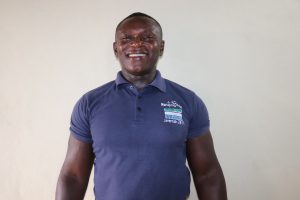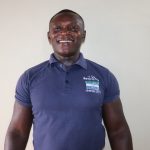Malap's Community Health Post nurses once fetched water from the clinic's well. But, unfortunately, global warming has lowered the area's water table, and the hand-pump broke last year. Now, the clinic must ask the surrounding community members to donate water from their own wells.
Not only is this outsourcing of water acquisition inconvenient, but it also poses a potentially fatal risk for the patients of thirteen communities who come here for help. Although the community members' offer of free water for the clinic is kindly meant, their wells are unprotected, unmonitored, and likely unsafe.
The community has contributed incredibly admirable work to keep the community health post fully functional, which shows just how much they revere having this resource available. People (mostly children) come unbidden every day with buckets of water to help with the daily running of the hospital. Village women also take turns helping to clean the clinic.
"The community women and girls play a great role in helping to get water for use in the clinic," said 26-year-old nurse, Isha K. "The distance between the clinic and the nearest hand-dug well with a hand pump is far. Not only is it far, but it is also a test of how hard it is to walk uphill with a bucket of water on the head."
But all this effort is wasted if patients become even more ill by drinking, or being treated with, contaminated water. Water is necessary in a clinic for so many reasons: cleaning, sterilization, cooking, bathing, and drinking, among others.
"I feel terrible to subject children to such treatment every day, so I have sometimes refused their offer and managed to [fetch water] myself," Isha continued. "The messages to the District Medical Officer for help in getting our water well situation amended were too many to count. I cannot afford to pay someone to fetch water for me."
Isha's daughter, Mamusu, is well-acquainted with the clinic's water crisis even though she is only 12. "My mother is a nurse, and as a child of a nurse, I go wherever she goes. The worst part of all [is] fetching water. I help my mother every minute I get by making sure there is water in all of the containers. That takes me to the other water wells in the morning and evening."
"I rarely have sick days, because every day I have to fetch water for my mother," Mamusu continued. "Thanks to God there are other older women that help them with the water for the clinic. I wish I never had to be moved to this community."
"I see a lot of nurses have put in for transfers out of this community," Isha added. "I pray that I do not have to end up doing the same."
Here’s what we’re going to do about it:
Well Rehabilitation
The well marked for this overhaul is dry for a few months every year and needs major work to supply adequate, clean water to the community year round. The pump will be removed, and a hand auger will be lowered inside and powered by a drill team. This hand auger will allow the team to drill several meters deeper to hit a sufficient water column that will ensure the well supplies water throughout all seasons.
As the team drills, casing will be installed, transforming the bottom of this hand-dug well into a borehole. PVC piping will connect this lower system directly to the pump, a construction that we know will also improve the quality of water.
Once this plan is implemented, everyone within the community will have access to safe drinking water in both quality and quantity, even through the dry months.
Hygiene and Sanitation Training
There will be hygiene and sanitation training sessions offered for three days in a row.
After our visit, the hygiene and sanitation trainer decided it would be best to teach community members how to build a tippy tap (a hand-washing station built with a jerrycan, string, and sticks). They will use these tippy taps for handwashing demonstrations, and will also teach about other tools like dish racks and the importance of properly penning in animals.
These trainings will also strengthen the water user committee that manages and maintains this well. They enforce proper behavior and report to us whenever they need our help solving a serious problem, like a pump breakdown.

 Borehole Well and Hand Pump
Borehole Well and Hand Pump
































 "Our plan or goal before was to have a water [point] where we could fetch safe drinking water to save the lives of children in this community. Now you have made it possible for us to help in saving the lives [of] women and children in the time of labor," concluded Sadiatu.
"Our plan or goal before was to have a water [point] where we could fetch safe drinking water to save the lives of children in this community. Now you have made it possible for us to help in saving the lives [of] women and children in the time of labor," concluded Sadiatu.